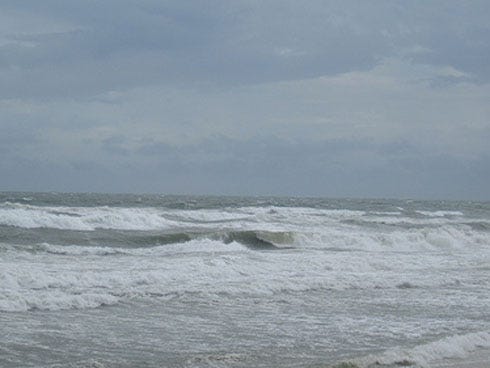
TALLAHASSEE – Florida Division of Emergency Management (FDEM) officials remind residents and visitors to stay alert and use caution at the beach, as an elevated risk of rip currents is expected along much of Florida’s Gulf Coast. A high risk of rip currents is expected from Levy through Monroe County, as well as in the Panhandle from Escambia through Gulf County. On the Central Atlantic Coast, beaches from Volusia through Martin County will see a moderate risk of rip currents.
The National Weather Service has also issued a Gale Warning for coastal waters along the Panhandle and Big Bend through late this evening, and Northeast Florida from 3PM through Friday. Strong winds gusts of up to 54 miles per hour, and large waves of 8 to 12 feet will be possible offshore in the warning areas. Small craft advisories are also in effect after 1PM for Gulf Coast waters along the Peninsula, and off the East Central Florida Coast.
“Strong onshore winds and waves will bring a high risk of rip currents and less than ideal boating conditions to much of Florida’s coast today,” said FDEM Meteorologist Brad Schaaf. “Beachgoers and boaters should be sure to check forecasts and follow necessary safety precautions while visiting the coast.”
It is important to remember that when red flags are flying, beachgoers should remain alert while visiting Florida’s beaches. A rip current is a narrow, powerful current of water that runs perpendicular to the beach, out into the ocean.
When at the beach: – Before you leave for the beach, check the latest National Weather Service forecast for local beach conditions. Many offices issue a Surf Zone Forecast. – Obey all instructions and orders from lifeguards. Lifeguards are trained to identify hazards. – Know the meaning of and obey warnings represented by colored beach flags. Different beaches may use different colors but a commonly used series include: – Double Red: Beach is closed to the public – Single Red: high hazard, e.g., strong surf or currents – Yellow: medium hazard – Green: Calm conditions although caution is still necessary – Purple: Flown with either Red or Yellow: Dangerous marine life
Stay at least 100 feet away from piers and jetties. Permanent rip currents often exist alongside these structures. Pay especially close attention to children and persons who are elderly when at the beach. Even in shallow water, wave action can cause loss of footing. Be cautious. Always assume rip currents are present even if you don’t see them. If caught in a rip current:
– DON’T PANIC. Remain calm to conserve energy and think clearly. – NEVER swim against the rip. Stay afloat and signal for help. – Swim out of the current in a direction following the shoreline. When out of the current, swim at an angle–away from the current–towards shore. – If you are unable to swim out of the rip current, float or calmly tread water. – Draw attention to yourself: face the shore, wave your arms, and yell for help. If you see someone in trouble, don't become a victim too:
– Get help from a lifeguard or, if one is unavailable, have someone call 9-1-1. – Throw the rip current victim something that floats–a lifejacket, a cooler, an inflatable ball. – Yell instructions on how to escape.
Practice Safe Boating:
– Check forecasts well ahead of time. – Be sure everyone aboard is wearing a life jacket. – If caught in a thunderstorm, go below deck if possible, and stay away from masts or ungrounded metal objects. – Have a VHF marine band radio on board. – Know the limitations of your boat. If small craft advisories or gale warnings are issued, you should postpone travel. To learn more about severe weather in Florida, and to Get A Plan!, visit www.FloridaDisaster.org, and follow FDEM on Twitter at @FLSERT, on Facebook at www.Facebook.com/FloridaSERT and on Google+ at FLSERT.
This article originally appeared on Santa Rosa Press Gazette: Santa Rosa residents warned of rip currents along beaches
